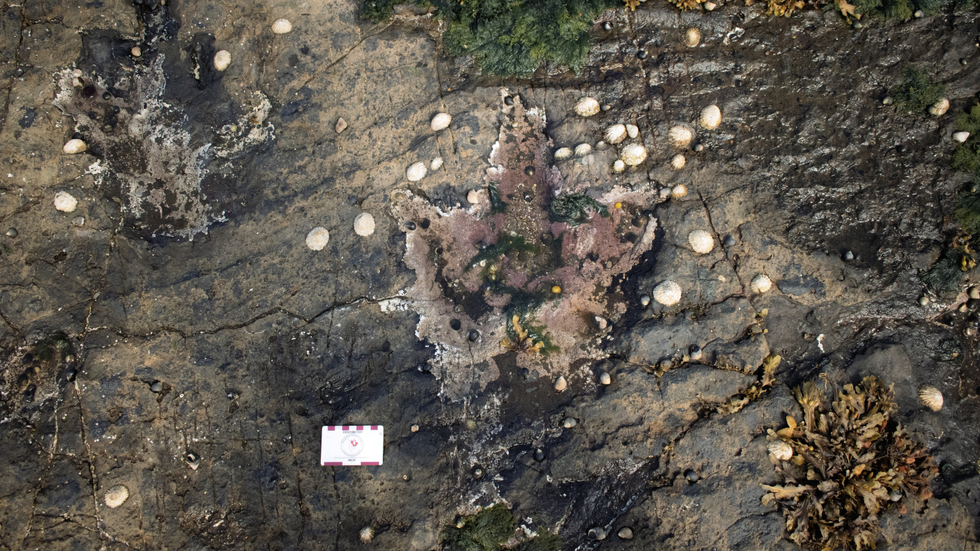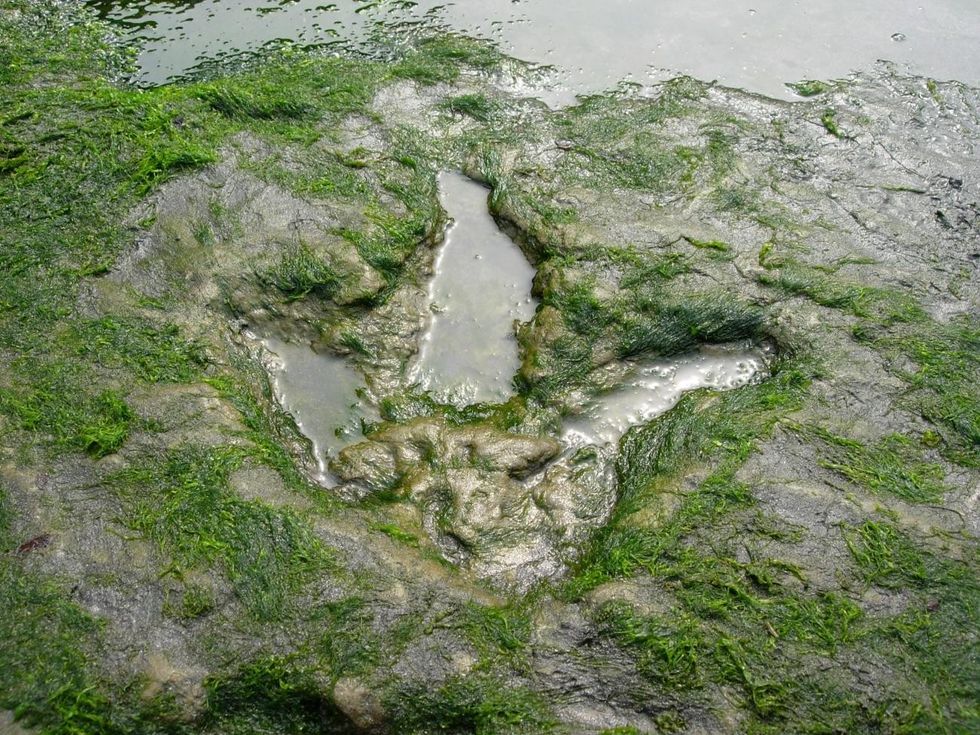Palaeontology breakthrough reveals how T-rex relative once dominated Britain
Massive meat-eating megalosaurs and enormous plant-eating sauropods once roamed Scotland, new research has found
Don't Miss
Most Read
Trending on GB News
Scientists have discovered hundreds of 167 million-year-old fossilised dinosaur footprints in the UK.
As many as 131 of the prehistoric prints were uncovered by researchers from the University of Edinburgh at Prince Charles's Point on the Isle of Skye - and they reveal that massive meat-eating megalosaurs and enormous plant-eating sauropods once roamed the Scottish island.
The site, located on the Trotternish peninsula, has become one of the most extensive dinosaur track locations in Scotland.
The research reveals the ancient creatures gathered around shallow freshwater lagoons at the same time.

As many as 131 of the prehistoric prints were uncovered by researchers from the University of Edinburgh
PA/UNIVERSITY OF EDINBURGH
The most striking footprints belong to megalosaurs, carnivorous ancestors of Tyrannosaurus rex, measuring about 45cm long with three toes and sharp, curved claws.
The sauropod prints are round and slightly larger - and had previously been mistaken for underwater fish burrows.
Scientists believe the dinosaurs' behaviour around the watering holes was similar to how animals congregate around water sources today.
Using a drone, the Edinburgh team captured thousands of overlapping images of the shoreline at the remote bay, which were processed to create digital 3D models of the footprints preserved in the rock.
The researchers analysed the tracks to understand how the dinosaurs moved across the landscape during the Middle Jurassic period.
MORE PALEONTOLOGY BREAKTHROUGHS:

The prints reveal that massive meat-eating megalosaurs and enormous plant-eating sauropods once roamed the Scottish island
PA/UNIVERSITY OF EDINBURGH
Their findings, published in PLOS One, show the overlapping tracks suggest the different dinosaur species visited the lagoon at approximately the same time.
"The footprints are mostly worn, but there are some fantastic examples that preserve really exquisite features which showcase these dinosaurs to the max," said Tone Blakesley, the research lead on the project at the University of Edinburgh.
"It's surprising they haven't been found until now."
Blakesley added that the footprints provided a "fascinating insight" into dinosaur behaviour.
"Rocks that date to the mid-Jurassic are very rare, which is annoying for us researchers because this was a time when dinosaurs were rapidly evolving into a variety of forms."
UNIQUE DISCOVERIES IN BRITAIN - READ MORE:

Some prints had previously been mistaken for underwater fish burrows (file photo)
NATURESCOT
"It boggles my mind to think that when Bonnie Prince Charlie was being pursued by English troops, he might have been following the footprints of dinosaurs to safety on Skye," said Steve Brusatte, a professor of palaeontology and evolution at Edinburgh.
"It's astounding to think that when Bonnie Prince Charlie was running for his life, he might have been sprinting in the footsteps of dinosaurs."
The area is named after the Jacobite leader who sought refuge there in 1746 after the Battle of Culloden.
The footprints were created as dinosaurs walked through the shallow lagoon and became preserved in the vast, rippled sandstone platform that stretches out to sea today.
"It looks like someone has pressed the pause button," said Blakesley. "It's a surreal feeling to see these footprints with my own eyes."
On a recent visit, researchers found what appeared to be a theropod footprint inside a sauropod trackway.
"There are definitely more footprints to be found," Blakesley noted.









